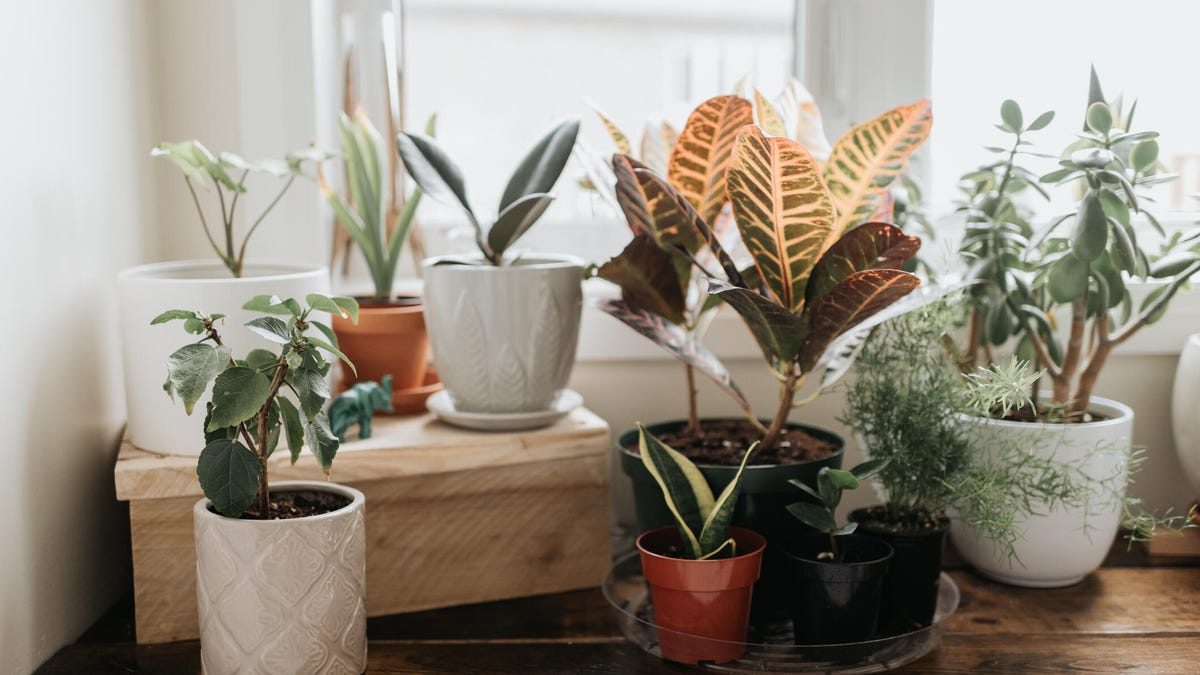 Why You Can Trust CNET
Why You Can Trust CNET Where to Put Houseplants for Maximum Growth
You can boost your houseplants and go longer without watering if you know where to stick 'em.

Where you put your plants in your home matters.
Plants and greenery can add an instant vibe to any space. Choose the right plants and you'll have cleaner air to breathe and some common houseplants are even known to keep bugs away. Plants don't do much good if they're dead or struggling to stay alive. Putting houseplants in the right places can give them a boost, particularly when you're busy or traveling and can't water them quite as often.
Even for the most novice indoor gardener, there are approaches you can take to increase your odds of keeping plants happy and healthy -- and a few bits of houseplant philosophy to help you along the way. A big factor in having a home full of thriving indoor plants is making sure you're putting those houseplants in the right place.
Here's what to know about where you should (and shouldn't) be placing your leafy friends. You can also check out four easy ways to keep your plants alive while you're traveling, how to grow your own herbs at home and tips for using an AeroGarden.
Bright windows vs. dark corners
Whatever kind of plant you have, you're going to be chasing a balance between the amount of water and sunlight you give it, according to what the plant needs. This means that not every plant wants to sit in the direct light of a sunny window, and not every plant can handle being placed in a dim corner. Some plants need water often; others can go without for longer stretches. (For a more in-depth, no-nonsense dive into the science behind this, written by an engineer, The New Plant Parent by Darryl Cheng is a great read.) Often when people talk about low-light plants, as Cheng writes, they mean plants that "starve gracefully." Less light means less food. Some plants can keep appearances up for longer despite that.
When you buy a new plant, do some research on the environment it prefers, but also know you might have to make modifications. For lots of folks getting started with houseplants, there's a certain appeal to low-light plants. They seem harder to kill, they don't need copious amounts of light, although it's important to remember that low light doesn't mean no light.
Here are a few tips for where to put plants that don't need to sit in your sunniest window.
Where to put a snake plant
This snake plant hangs out in the bright, indirect light of my living room.
Snake plants (there are many varieties) are sturdy plants whose leaves grow vertically from the ground. The leaves are somewhat stiff and the plant generally grows slowly, particularly in lower light. This one isn't going to wilt. The great thing about snake plants is they can deal with a range of lighting situations, all the way up to full sun. They also prefer drier soil, which means you're going to water them less frequently. Admittedly, many folks may struggle with overwatering if they're newer to the plant world. Still, it's hard to say water your plant a certain amount of times per month. I keep my 4-year-old snake plant a few feet from a window in a room that's generally bright, and I water it once a week.
Where to put a pothos plant
There's a pot buried under the vines.
Pothos is a classic house plant. It's a vine, so it can get long, and you can let it hang down from its pot if you want. This is another that can get by with lower light, but again keep in mind that lower light means it won't grow as much. That said, you'll probably want to avoid putting your pothos in direct light. It likes moist soil. One way I've learned to tell if my Pothos plant is happy is if the leaves look and feel springy and perky.
Where to put a coffee plant
This coffee plant looks perky after being watered.
I wouldn't call a coffee plant a low-light plant, but it will not enjoy the pounding sun of a window sill. Bright, indirect light suits a coffee plant much better. Keep your coffee plant's soil moist, but don't drown it. One quirk of the coffee plant that I've come to appreciate is its drama: If it needs water, the leaves will droop, but they'll bounce back relatively quickly after you give it a good drink. Ideally, it won't have to droop to let you know it's thirsty, but at least it'll give you some clear communication if you forget.
For more plant tips, check out CNET's picks for the best garden and seed delivery services, and how to plant a tree the right way.



